Special Report
21 Cities Emerging From Drought

Published:
Last Updated:

After more than five years of drought in the western United States, above-average precipitation during the fall and winter months has finally delivered relief in 2017. While careful evaluation of the region’s primary water sources — surface water, snowpack, and groundwater — is still required to fully assess the recovery, California Gov. Jerry Brown officially ended in April the state of emergency in all but a few counties in the state.
[in-text-ad]
To determine the cities that had the most remarkable recoveries, 24/7 Wall St. reviewed 12 months of data for U.S. counties published weekly by the U.S. Drought Monitor. Drought severity ranges from abnormally dry conditions to moderate, severe, extreme, and exceptional levels. Exceptionally dry conditions can lead to widespread crop losses and water emergencies.
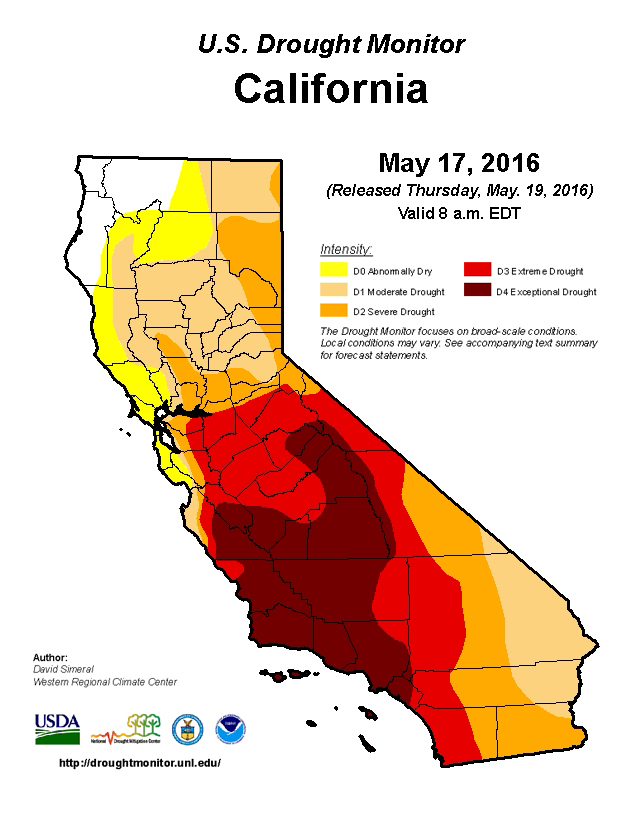 |
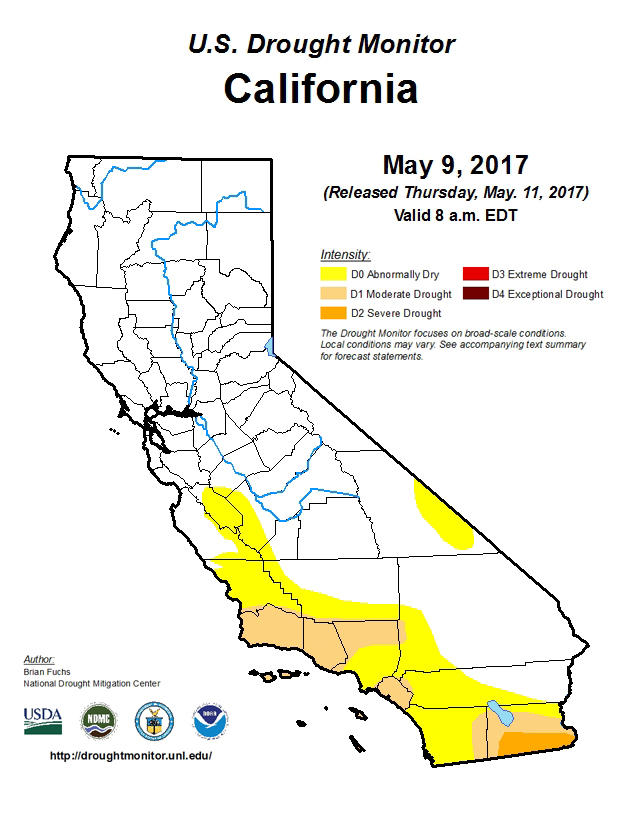 |
(Click images to enlarge)
Based on the latest Drought Monitor data, around 5% of the United States is in some state of drought, the lowest level ever recorded by the Drought Monitor, which started collecting data in 2000. There are 21 metro areas that recovered remarkably well from drought. In May of last year, 80% or more of the land area in each of these areas were classified as being in severe or worse levels of drought. Today, however, these 19 California and two Nevada metro areas are close to or completely free of drought.
Click here to see the cities emerging from drought.
Click here to see the detailed findings.
Click here to see the methodology.
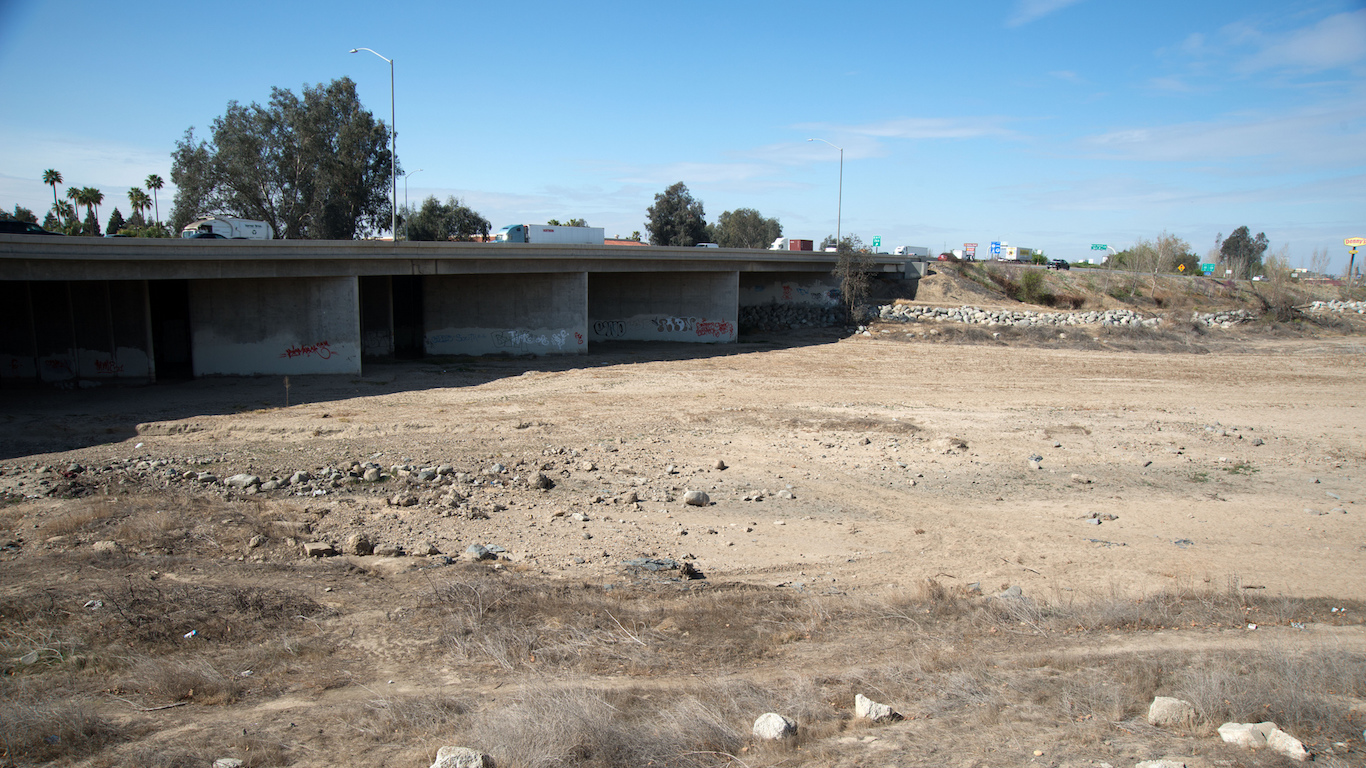 |
 |
1. Bakersfield, CA
> Change in severe drought coverage: -100.0 ppt.
> Pct. land abnormally dry: 38.7%
> Total time spent in severe drought since 2000: 6 years and 3 weeks
Like much of the western United States, the entirety of Bakersfield, California was in a state of severe drought last summer. Extreme drought, the next level of drought intensity, also covered the entire area. Possible impacts of extreme drought include major losses to agricultural operations, as well as widespread water shortages and restrictions. At the same time, close to 75% of the metro area was in exceptional drought — the maximum possible drought intensity.
While approximately 40% of Bakersfield remains classified as abnormally dry, the lowest of the five drought intensity levels, the area was completely free of severe, extreme, and exceptional drought as of the week ending May 15. According to meteorologist Brad Rippey, a strong Pacific jet stream during the fall and winter seasons brought relief to the West and areas like Bakersfield, California.
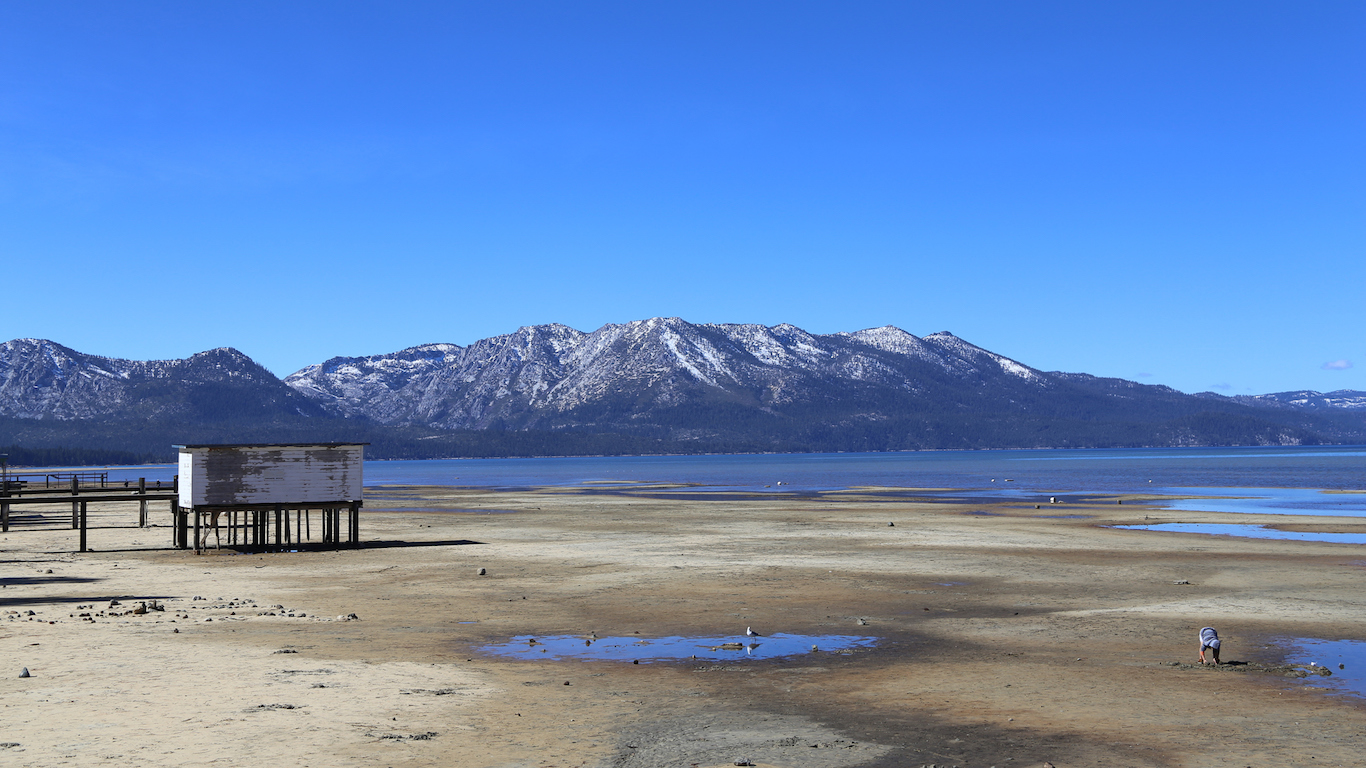 |
 |
2. Carson City, NV
> Change in severe drought coverage: -100.0 ppt.
> Pct. land abnormally dry: 0.0%
> Total time spent in severe drought since 2000: 5 years, 9 months, and 1 week
Carson City has endured multi-year severe drought conditions. After a near record five consecutive years of severe drought, the region is now virtually drought free. While last summer 100% of Carson City’s land area was classified as experiencing severe drought, this May 0% was considered so drought stricken. Drought and water management go hand in hand, but while drought can disappear overnight, depleted water sources and water management issues often require long-term solutions. As in many cities across the western United States, Carson City water restrictions will remain in effect this summer. Among other rules, no watering is permitted in the city between 10 a.m. and 6 p.m.
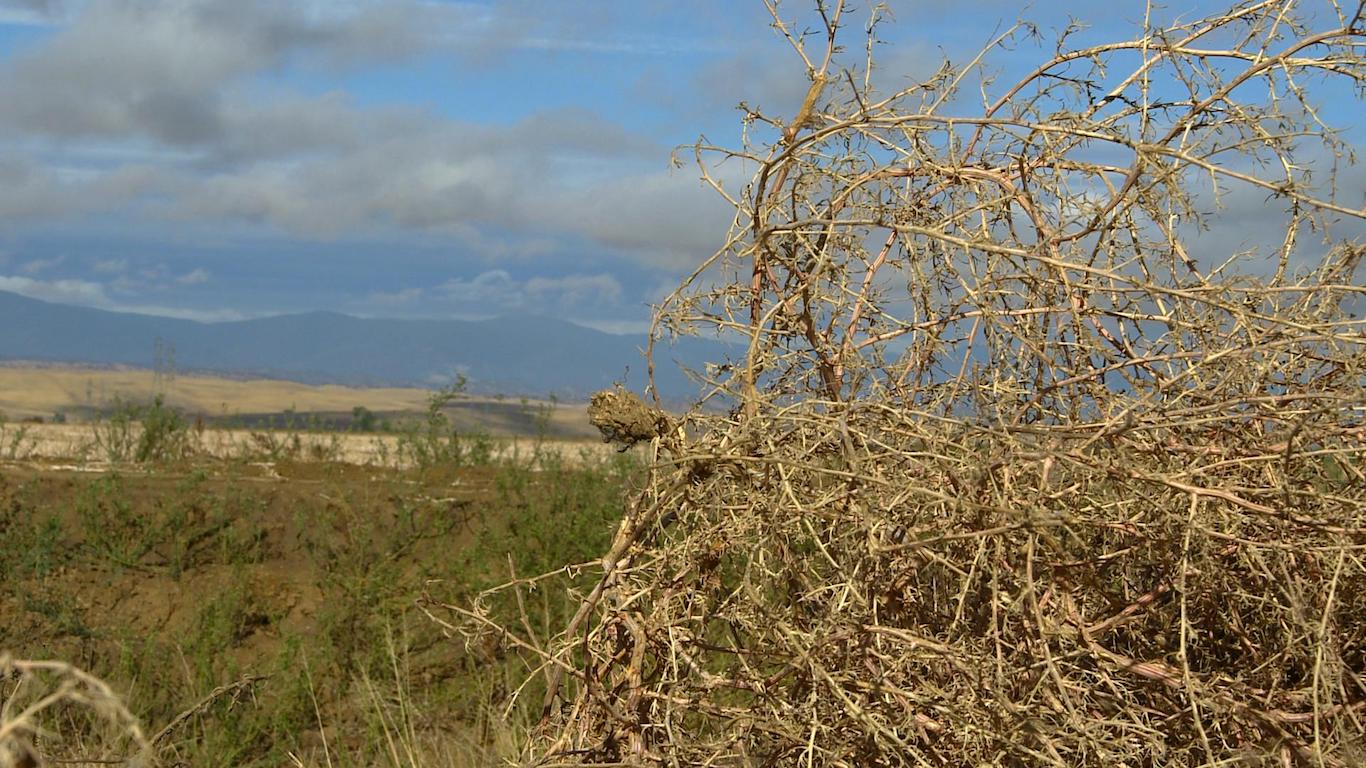 |
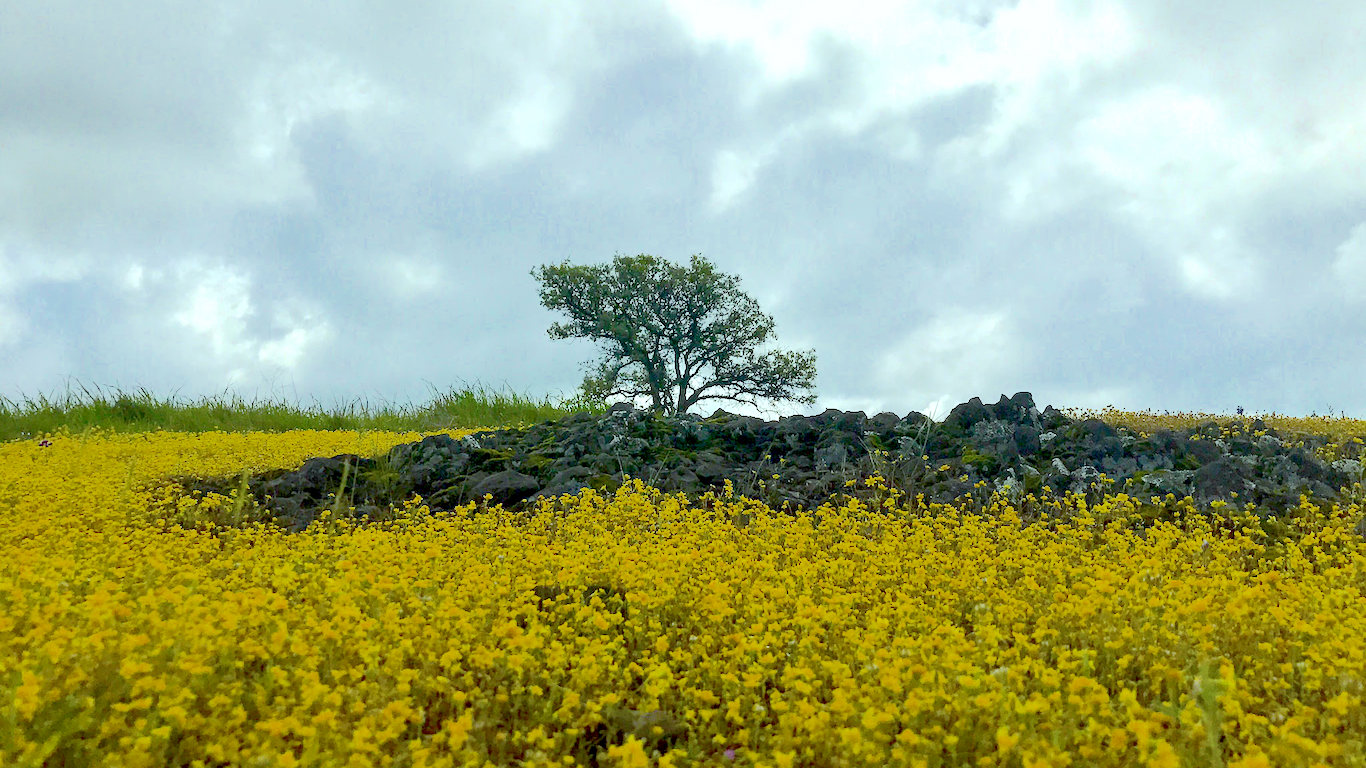 |
3. Chico, CA
> Change in severe drought coverage: -100.0 ppt.
> Pct. land abnormally dry: 0.0%
> Total time spent in severe drought since 2000: 3 years, 8 months, and 1 week
Chico is one of many California cities to recover from years of severe drought in the past 12 months. The metro area had nearly fully recovered by the end of last May, after a string of El Niño storms during the winter season brought heavy rains to the northern part of the state. Despite containing Lake Oroville, the state’s second largest reservoir, the Chico metro area is largely susceptible to drought. Many Chico communities rely on groundwater. After a number of residential wells had run dry by July 2015, Butte County, which comprises the Chico metro area, signed a Proclamation of Local Emergency. Despite the drought relief, Butte County leaders still recommend residents comply with the California Water Board’s Emergency Water Conservation Regulations.
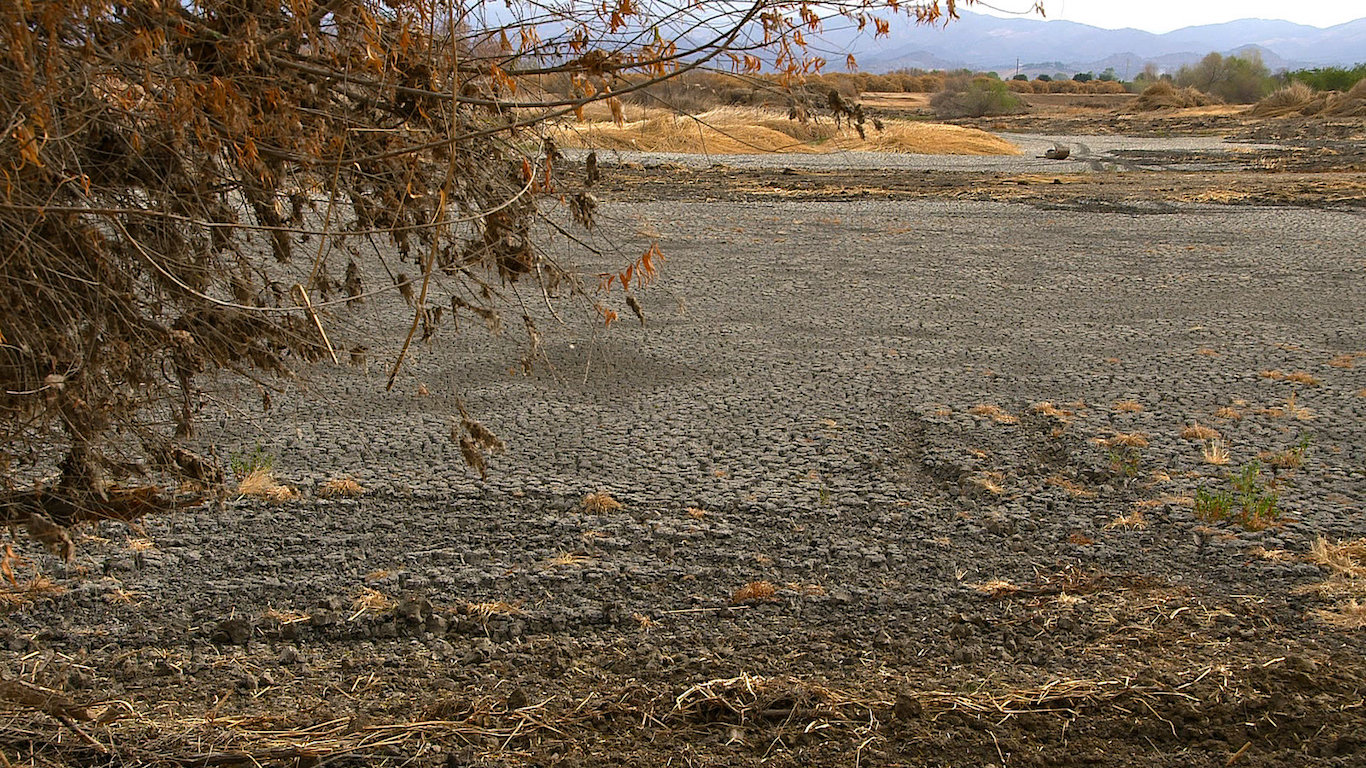 |
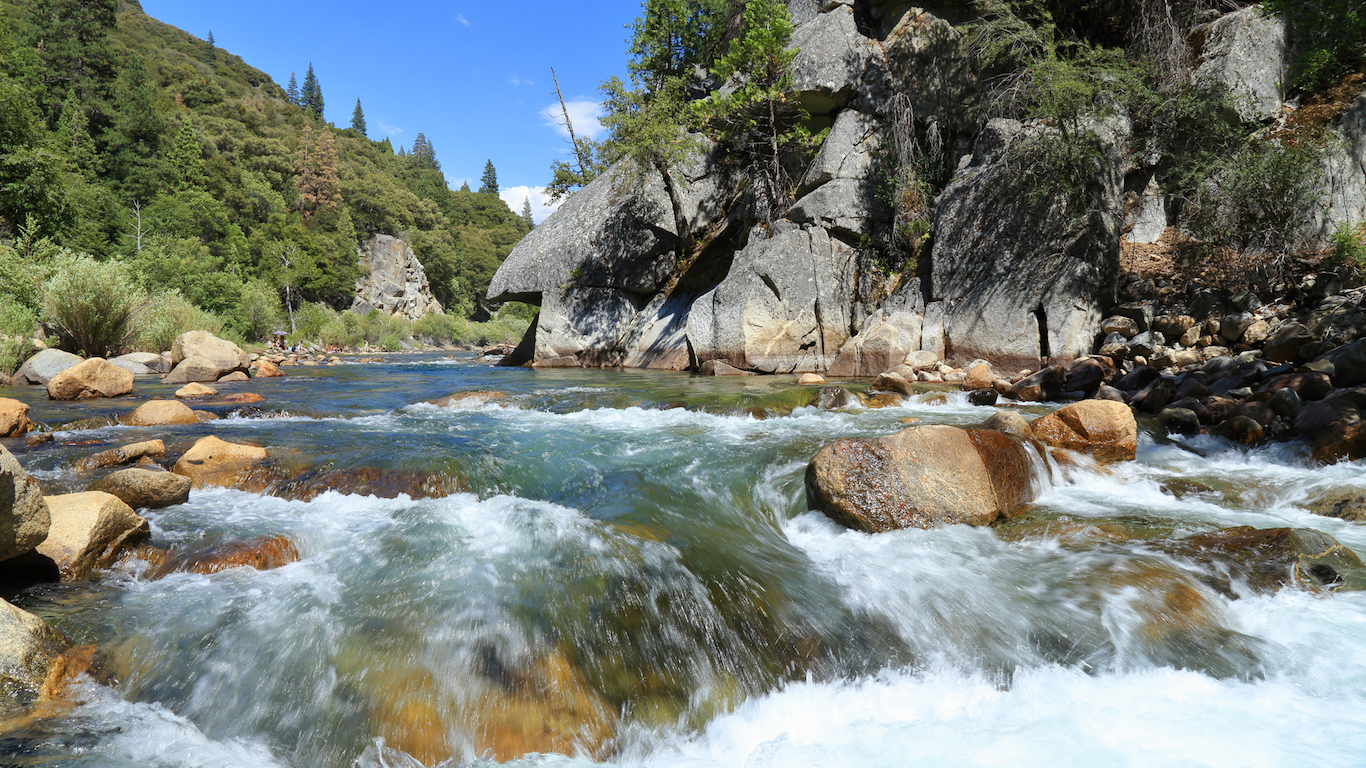 |
4. Fresno, CA
> Change in severe drought coverage: -100.0 ppt.
> Pct. land abnormally dry: 21.4%
> Total time spent in severe drought since 2000: 4 years and 6 months
Fresno is situated in the center of San Joaquin Valley, a region of California that has been engulfed in some of the worst drought conditions in the state for the last few years. In May 2016, more than 60% of Fresno’s land area was in a state of exceptional drought, the most intense level of drought. The possible impacts of exceptional drought include widespread crop and pasture losses, as well as vast water shortages in reservoirs, streams, and wells. In Fresno, where an estimated one in three jobs are related to agriculture, the drought has had a significant economic impact. According to one study by researchers at California State University, drought is responsible for $3.3 billion in losses to the San Joaquin Valley farming industry.
As of February 2017, Fresno was free of severe drought conditions. Yet, while Gov. Jerry Brown ended the drought state of emergency in nearly every county in California in April 2017, Fresno County was one of just four counties where the state of emergency was not rescinded.
 |
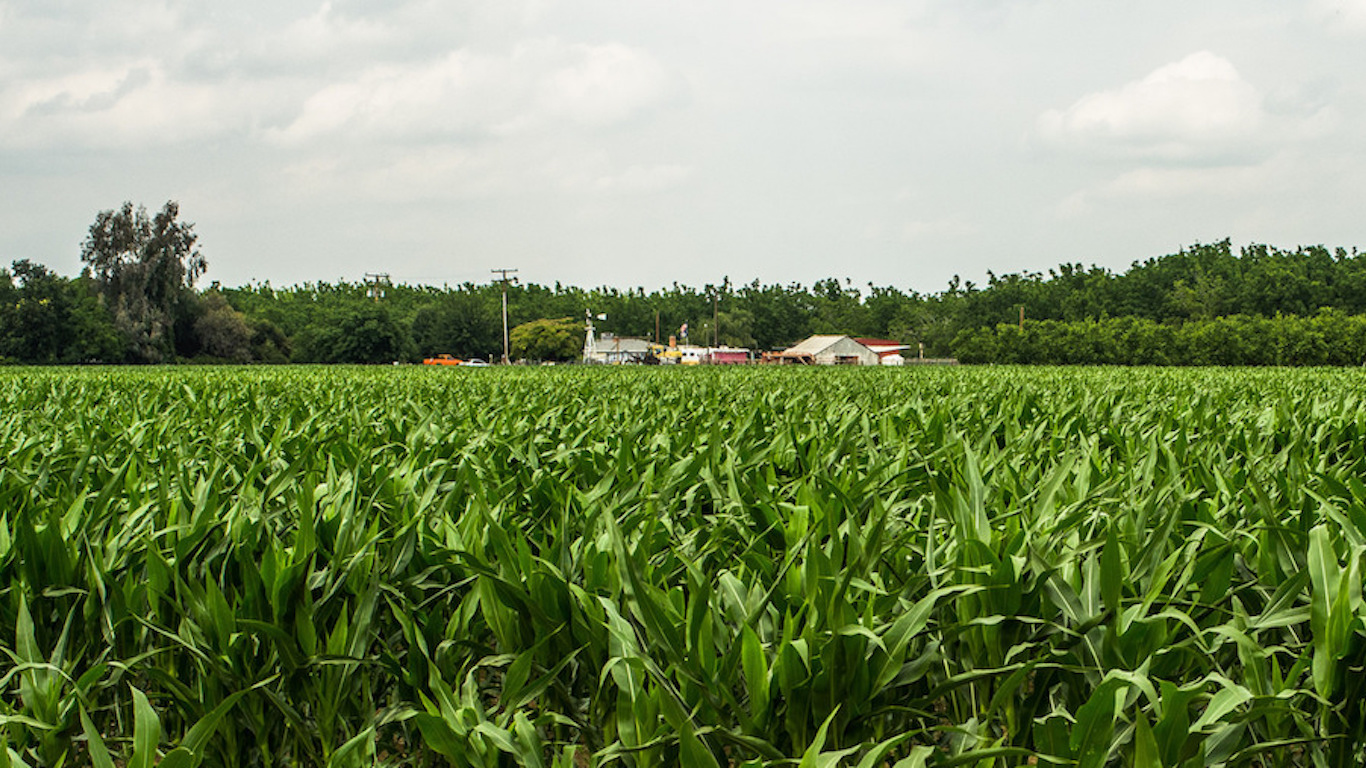 |
5. Hanford-Corcoran, CA
> Change in severe drought coverage: -100.0 ppt.
> Pct. land abnormally dry: 15.8%
> Total time spent in severe drought since 2000: 6 years, 1 month, and 1 week
The Hanford-Corcoran metro area is one of many cities in California that have completely recovered from severe drought over the past year. More than 90% of Hanford-Corcoran’s land area was engulfed in exceptional drought — the most intense level of drought — for nearly three straight years. However, as of February 2017, Hanford-Corcoran was completely free of drought.
Today, an estimated 16% of the metro area is abnormally dry, meaning there may be some lingering water deficits or some pastures or crops may not be fully recovered. According to Rippey, a strong Pacific jet stream during the fall and winter seasons helped the area recover from drought.
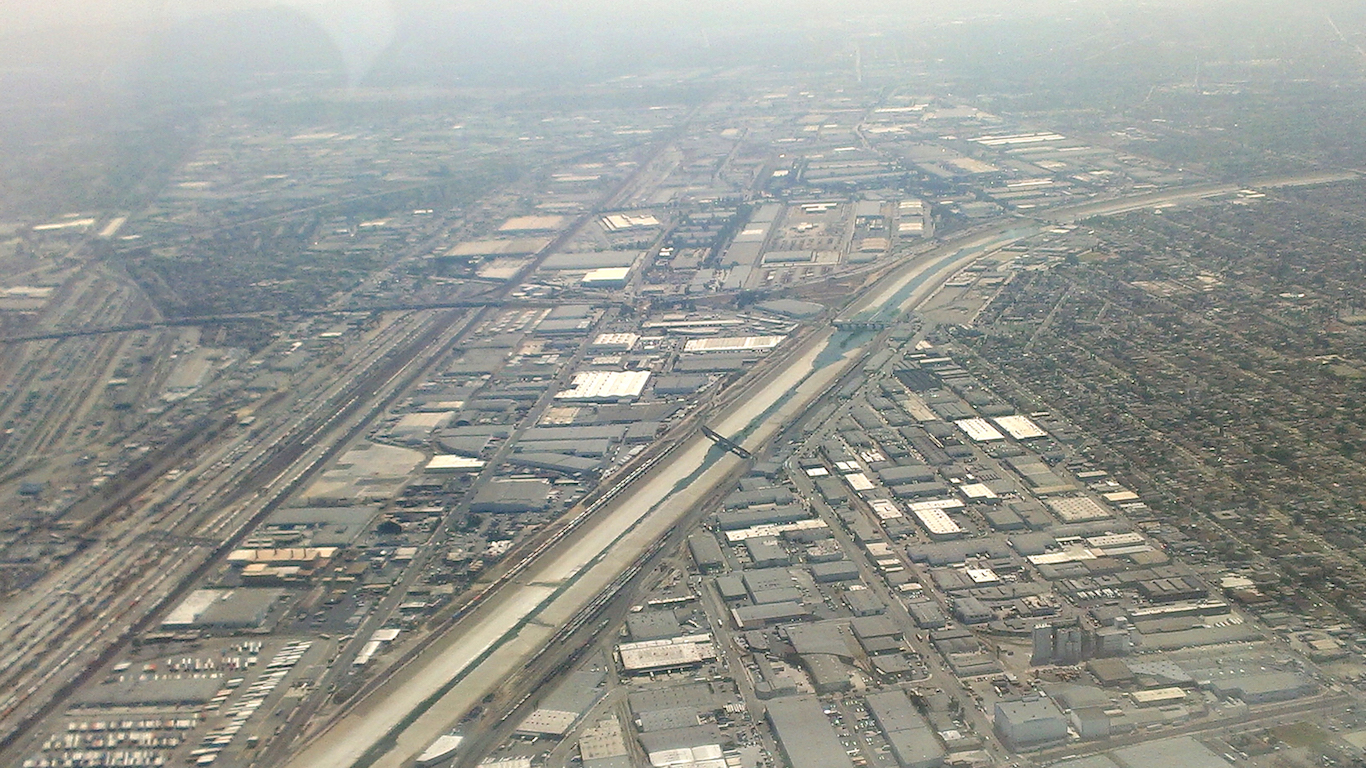 |
 |
6. Los Angeles-Long Beach-Anaheim, CA
> Change in severe drought coverage: -98.8 ppt.
> Pct. land abnormally dry: 100.0%
> Total time spent in severe drought since 2000: 5 years, 3 months, and 2 weeks
The Los Angeles area is one of the only metro areas in California where severe drought conditions persist. An estimated 1.2% of the area is in severe drought, mostly in the northern section of L.A. County. Still, drought conditions for the area as a whole have dramatically improved over the last year. Back in May 2016, more than 80% of the Los-Angeles-Long Beach Anaheim metro area was in exceptional drought — the most intense level of drought and the sixth largest exceptional drought coverage of any metro area. After heavy storms in the winter and fall seasons, Los Angeles has nearly recovered from all drought.
 |
 |
7. Madera, CA
> Change in severe drought coverage: -100.0 ppt.
> Pct. land abnormally dry: 0.0%
> Total time spent in severe drought since 2000: 3 years, 9 months, and 2 weeks
While an estimated 73% of California was in severe drought as of March 2016, today just 1.1% of the state is covered by such harsh drought conditions. Madera is one of many metro areas in California to completely recover from drought over the past year, improving from 100% of land area in extreme drought to 0% today. The entirety of the metro area had spent nearly four consecutive years in severe drought until strong storms in the winter months brought relief to much of the western United States. At least one of the community’s wells ran dry during the drought, and county officials adopted water use restrictions set by the state’s drought state of emergency in early 2014. After the very welcome wet season, Gov. Jerry Brown lifted the drought state of emergency in April this year for Madera County and most of the state.
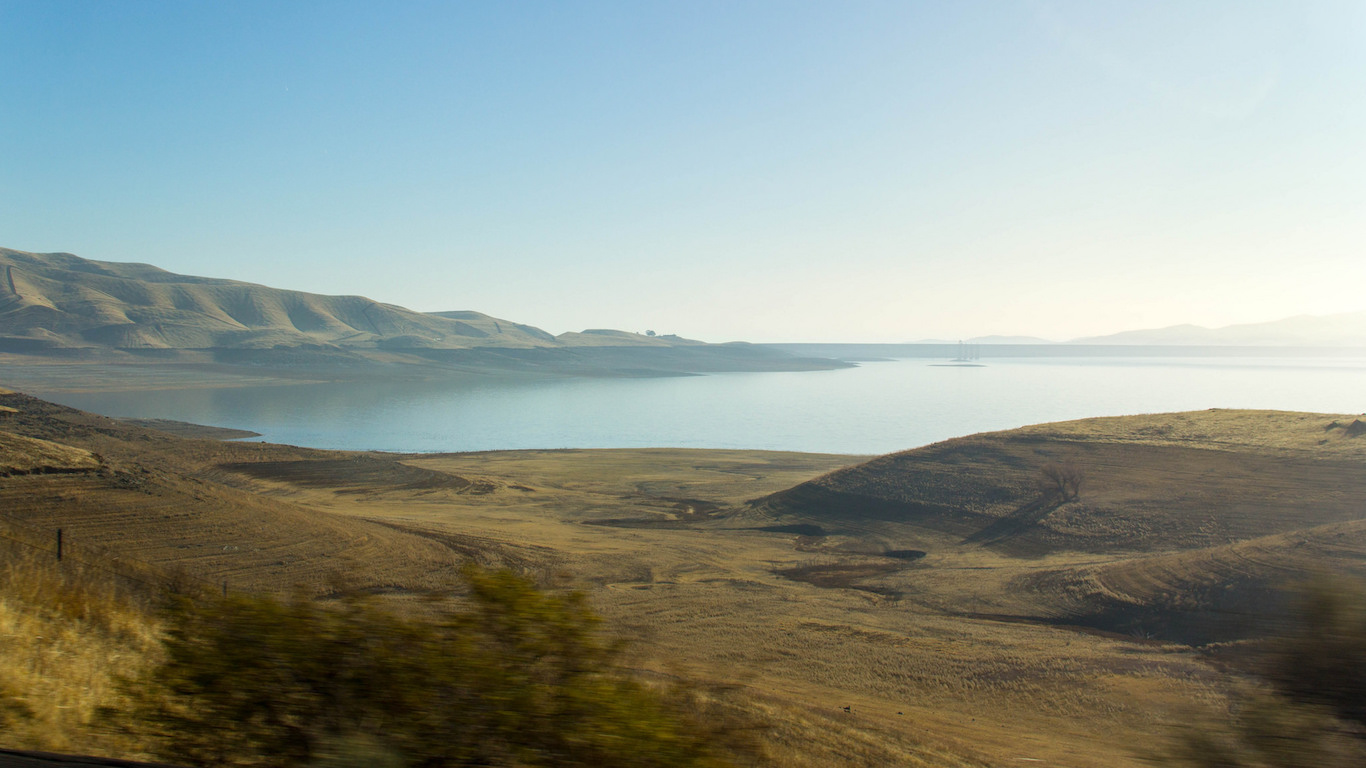 |
 |
8. Merced, CA
> Change in severe drought coverage: -100.0 ppt.
> Pct. land abnormally dry: 9.1%
> Total time spent in severe drought since 2000: 5 years and 2 weeks
While Merced was completely engulfed in severe drought for nearly three and a half years straight, as of February 2017 the metro area had fully recovered from severe drought. Gov. Jerry Brown ended the drought state of emergency in Merced and 53 other counties in California on April 7, 2017. While Merced is no longer in a state of emergency, 9.1% of the metro area remains abnormally dry, a designation for areas leaving drought, meaning there may be some lingering water deficits and that some pastures or crops may not be fully recovered.
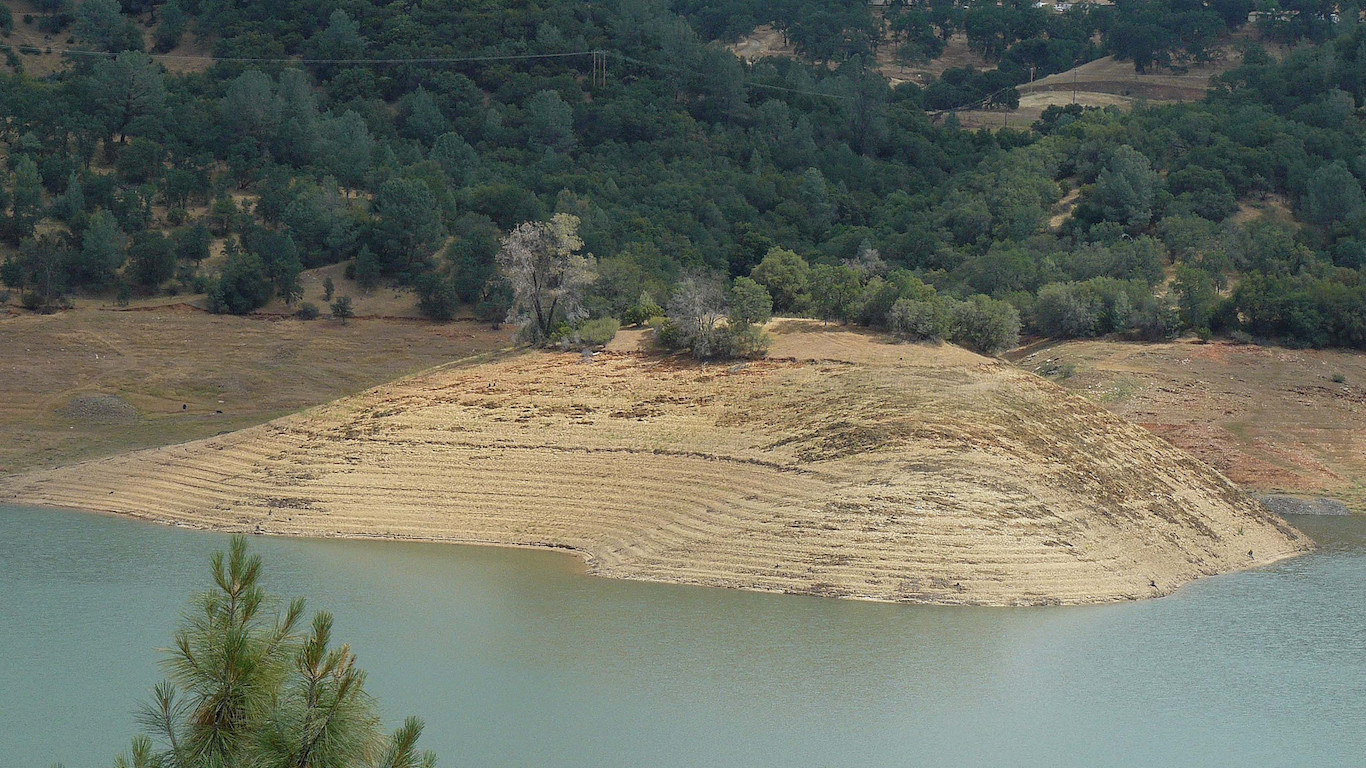 |
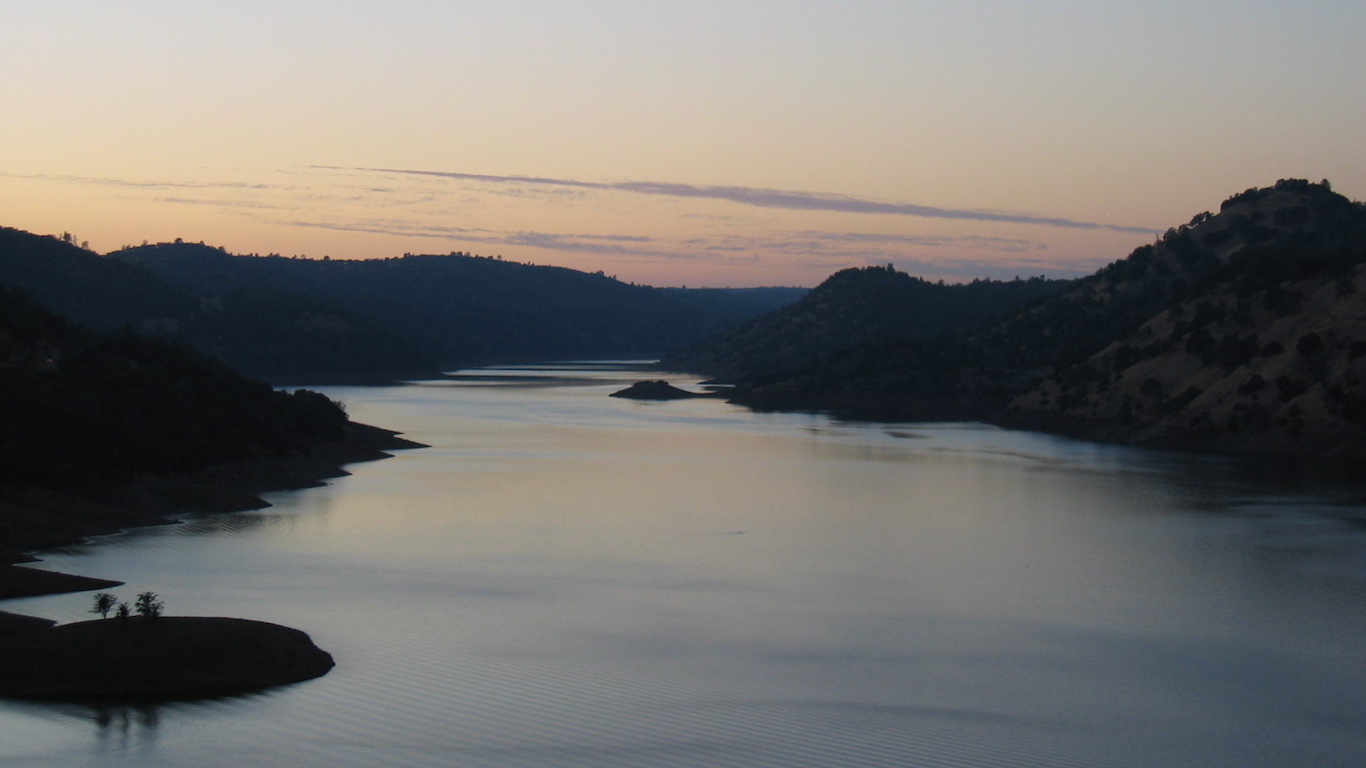 |
9. Modesto, CA
> Change in severe drought coverage: -100.0 ppt.
> Pct. land abnormally dry: 0.0%
> Total time spent in severe drought since 2000: 4 years and 10 months
While at this time last year an estimated 73% of California was in severe drought, today just 1% of the state’s land area is experiencing such drought conditions. Modesto is one of many metro areas in the state to completely recover from drought conditions over that 12 month period. The city, which was 100% in severe drought in May 2016, is completely free of drought today. Prior to the heavy winter storms that brought drought relief, the entire metro area had endured more than three and a half years straight of severe drought. On April 17 of this year, Gov. Jerry Brown ended the drought state of emergency in 54 counties in California, including Stanislaus, the county that comprises the Modesto metro area.
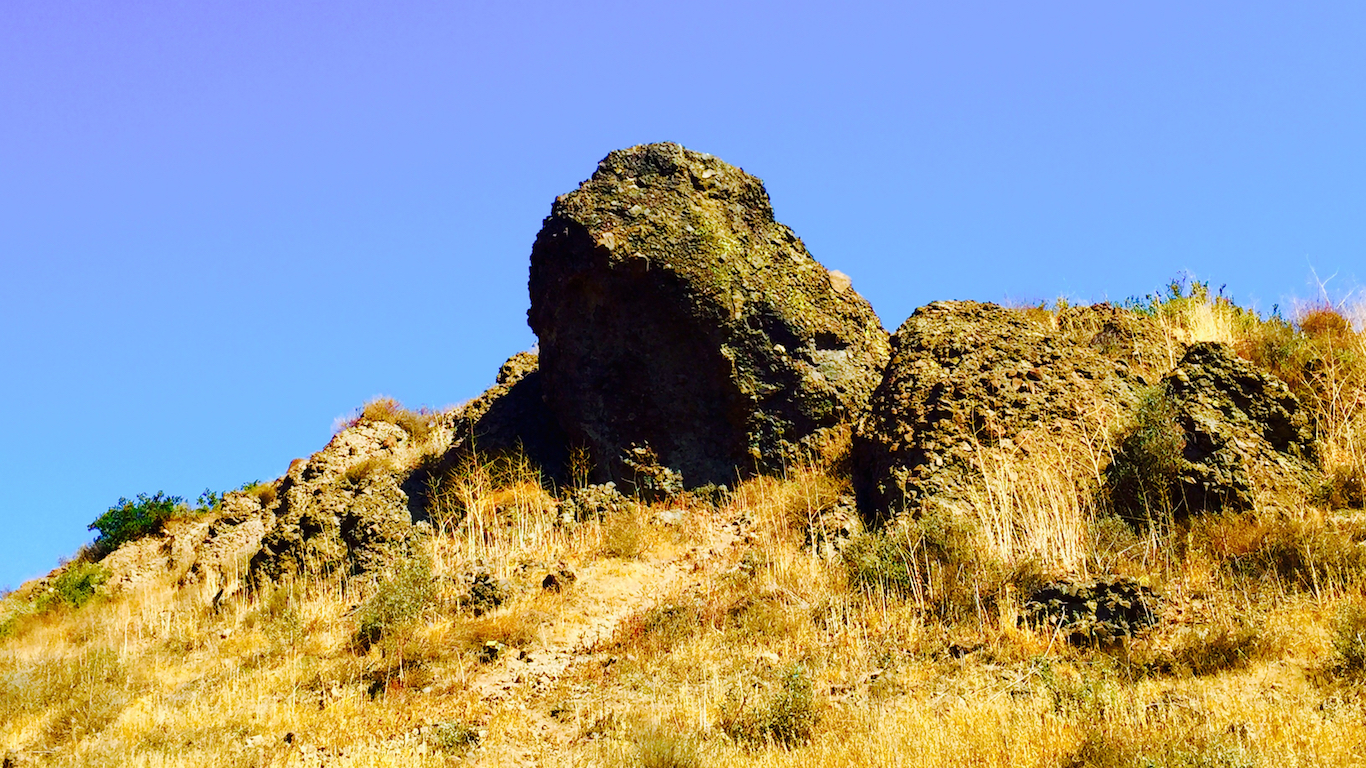 |
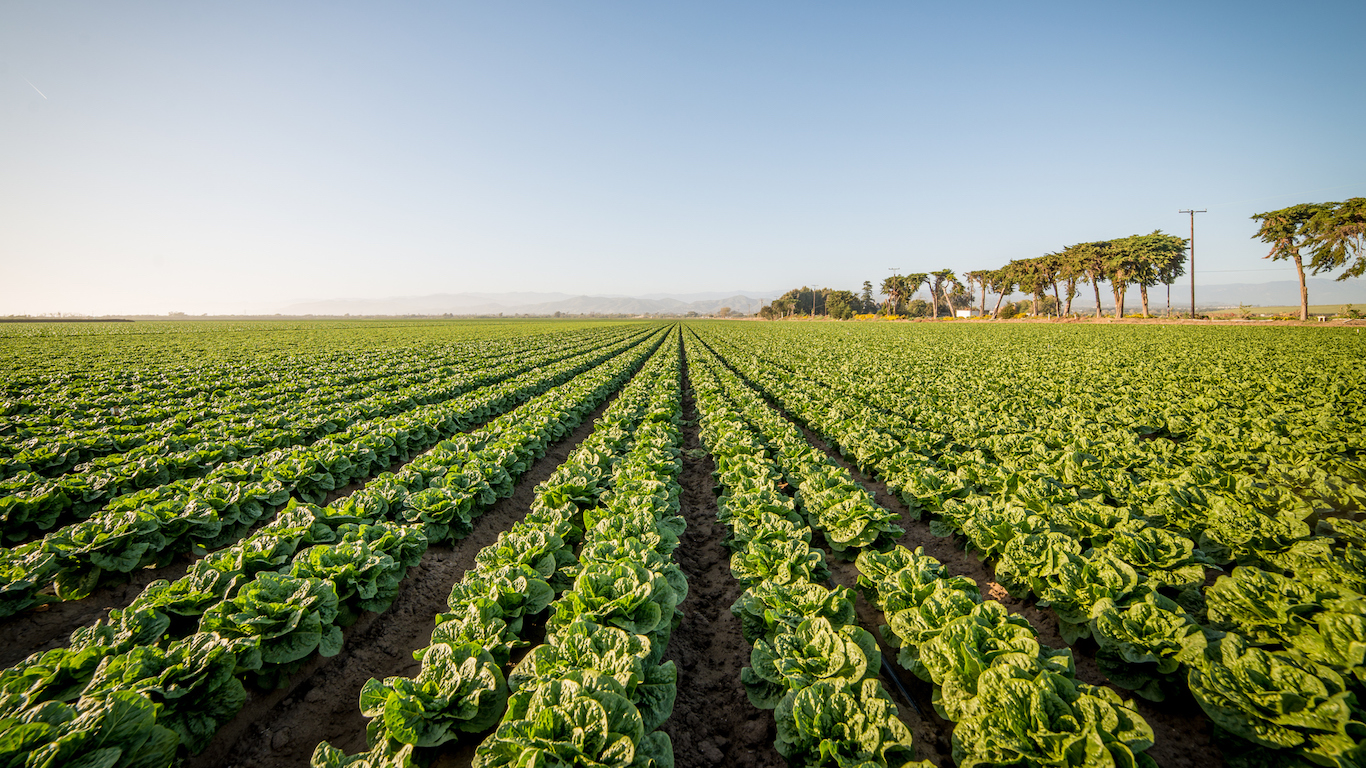 |
10. Oxnard-Thousand Oaks-Ventura, CA
> Change in severe drought coverage: -100.0 ppt.
> Pct. land abnormally dry: 100.0%
> Total time spent in severe drought since 2000: 5 years and 1 week
After the entire area experienced more than three and a half years straight of severe to exceptional drought conditions, the Oxnard-Thousand Oaks-Ventura metro area has entirely recovered. Like much of California, strong storms and above average rainfall in the most recent winter months brought drought relief to Oxnard.
While the rains have alleviated the worst of the area’s drought conditions, Oxnard is far from fully recovered. The entire metro area remains in abnormally dry conditions, which means there may be lingering water deficits and that some crops and pastures may not be recovered.
 |
 |
11. Reno, NV
> Change in severe drought coverage: -100.0 ppt.
> Pct. land abnormally dry: 0.0%
> Total time spent in severe drought since 2000: 6 years and 3 weeks
Reno is one of only a few metro areas outside California to have been in severe drought as of the week ending May 16, 2016. While the entire city area was in severe to exceptional drought last summer, today all of Reno is drought-free. The drought was alleviated by heavy storms and rainfall over this past winter, which was the wettest winter on record for Reno.
In 2010, Reno residents used over 200 gallons of water per capita each day, nearly the most of any city. During the drought, however, conservation efforts led to a substantial decrease in water usage. Water sales fell so much during the drought that the Truckee Meadows Water Authority, which provides water services to the Reno metro area, is looking to raise its prices to cover the lost revenue.
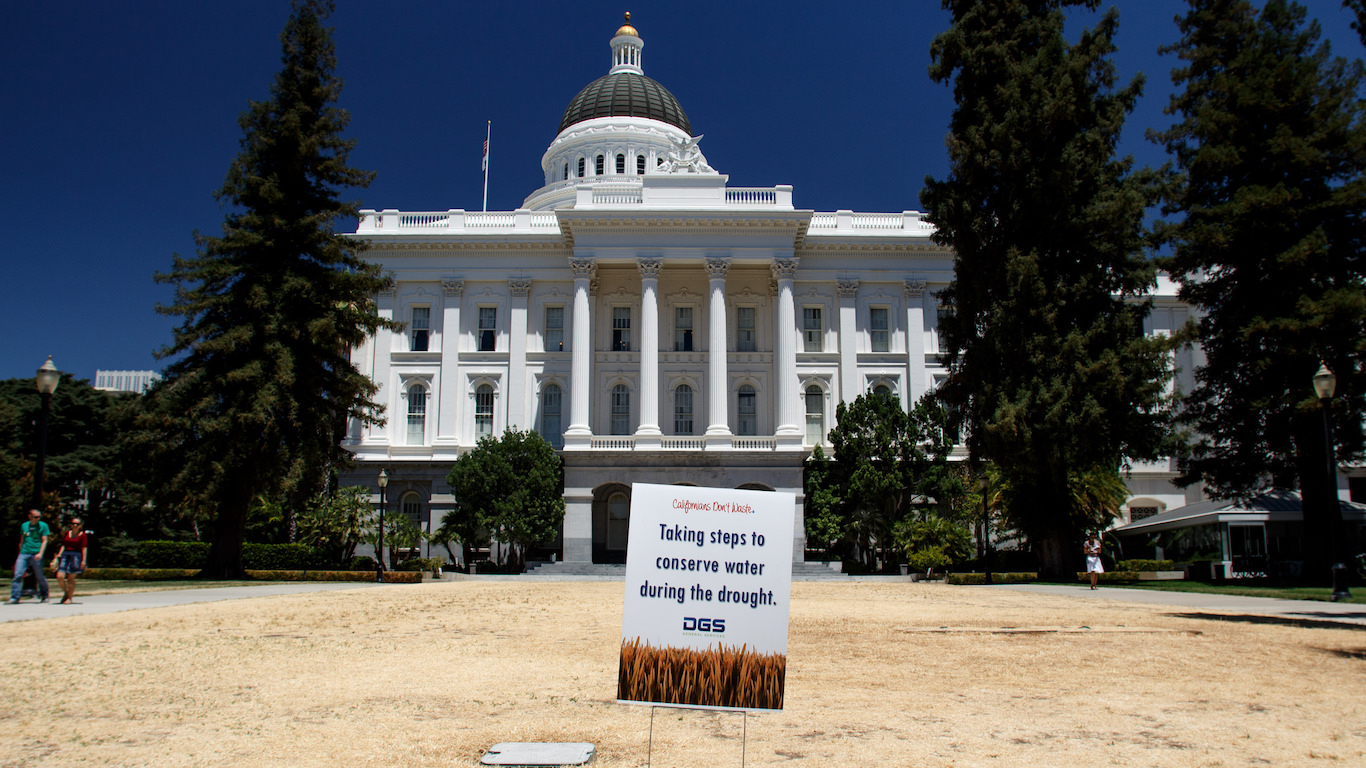 |
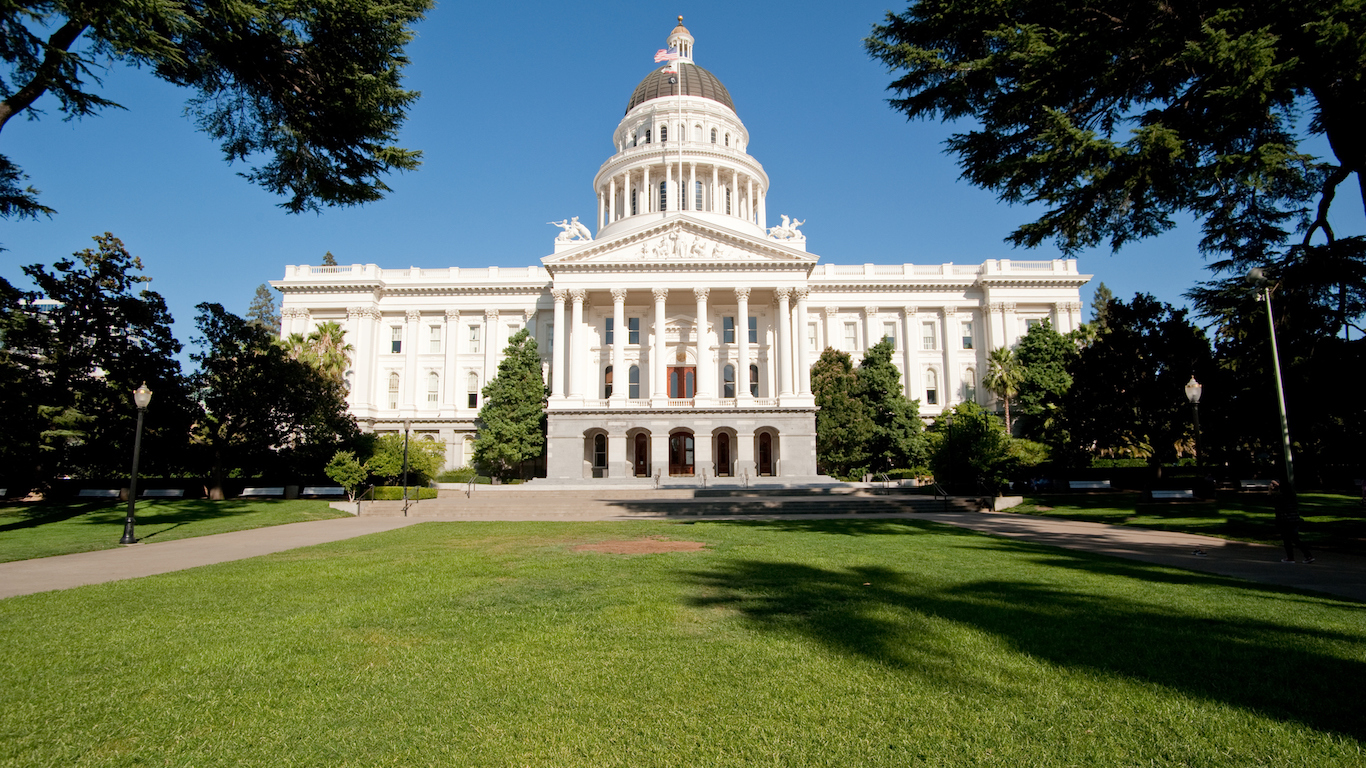 |
12. Sacramento–Roseville–Arden-Arcade, CA
> Change in severe drought coverage: -100.0 ppt.
> Pct. land abnormally dry: 0.0%
> Total time spent in severe drought since 2000: 3 years and 2 months
While in May 2016 an estimated 73% of California was in severe drought, the state has recovered to just 1% severe drought coverage today. Located in Northern California, the Sacramento–Roseville-Arden-Arcade metro area is one of many cities in the northern part of the state to completely recover from drought over the past year. The state recently had its wettest winter on record, with more than twice as many rainstorms as is typical. After the entire area experienced nearly three consecutive years of severe drought, drought conditions began to improve in Sacramento in mid-2016 and the metro area was completely drought free as of January of this year.
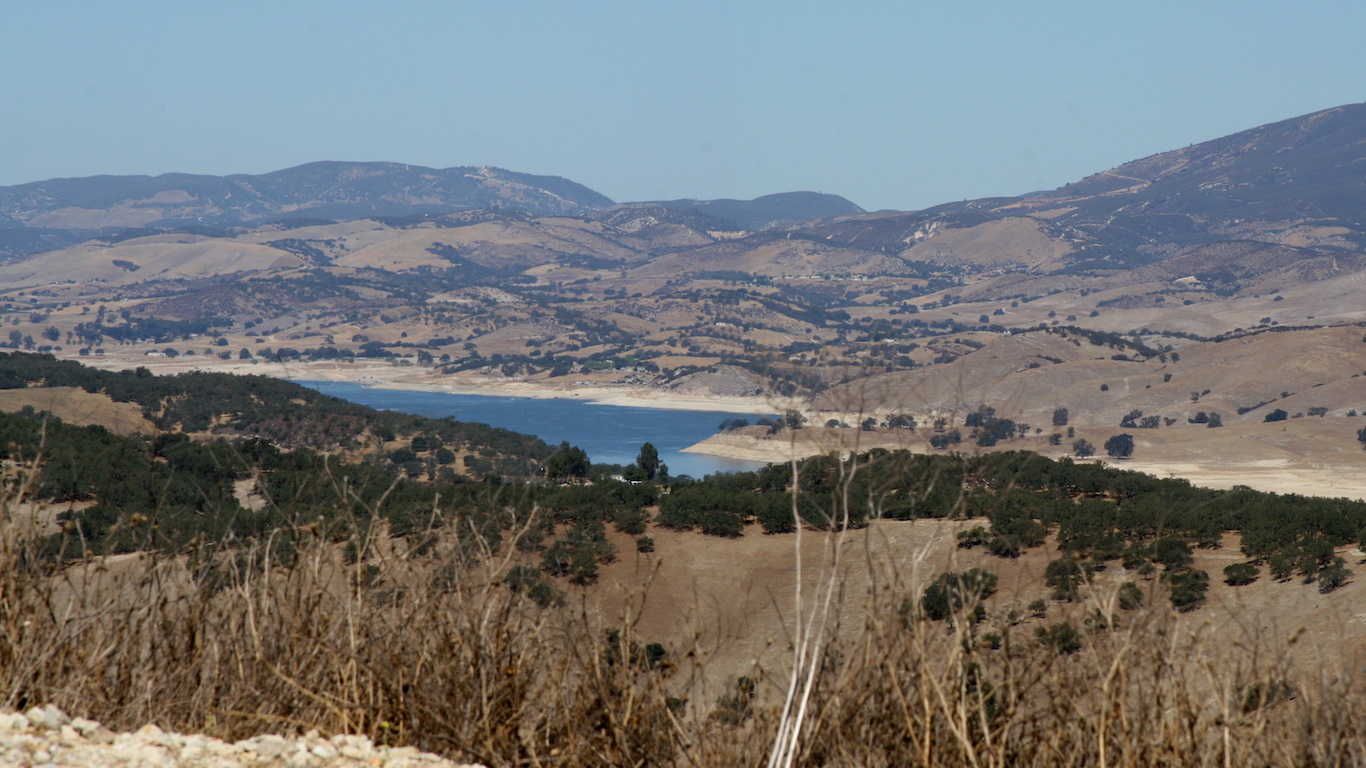 |
 |
13. Salinas, CA
> Change in severe drought coverage: -81.3 ppt.
> Pct. land abnormally dry: 26.0%
> Total time spent in severe drought since 2000: 4 years, and 5 months
While an estimated 81.3% of Salinas was in severe drought at this time last year, today the metro area is entirely free of such drought conditions. Despite heavy drought conditions in the area, Salinas was spared from much of the economic loss endured by other agriculture-dependent cities. While cities in Central Valley depend largely on reservoirs as their water source, Salinas is largely dependent on groundwater. Farmers in Salinas Valley drill wells to access underground aquifers, which are far less susceptible to drought than reservoir and surface water sources. Many farmers in Salinas were actually able to profit from the drought as the reduced supply of agricultural products from Central Valley led to price hikes and increased demand for certain foods produced in Salinas.
 |
 |
14. San Diego-Carlsbad, CA
> Change in severe drought coverage: -100.0 ppt.
> Pct. land abnormally dry: 100.0%
> Total time spent in severe drought since 2000: 5 years, 2 months, and 3 weeks
With water from the Colorado River and a desalination plant in Carlsbad completed in late 2016, the San Diego-Carlsbad metro area has been relatively well supplied despite experiencing serious drought conditions in recent years. In fact, for these reasons, the San Diego County Water Authority has advocated for looser water restrictions. Watering rules remain in effect in both parts of the metro area.
The entirety of the metro area remains classified as abnormally dry — the lowest intensity of drought. Conditions are still considerably better than last summer when over two-thirds of the region was experiencing extreme drought, the second worst level of drought intensity. Extreme drought can lead to crop losses and water shortages and regulations.
 |
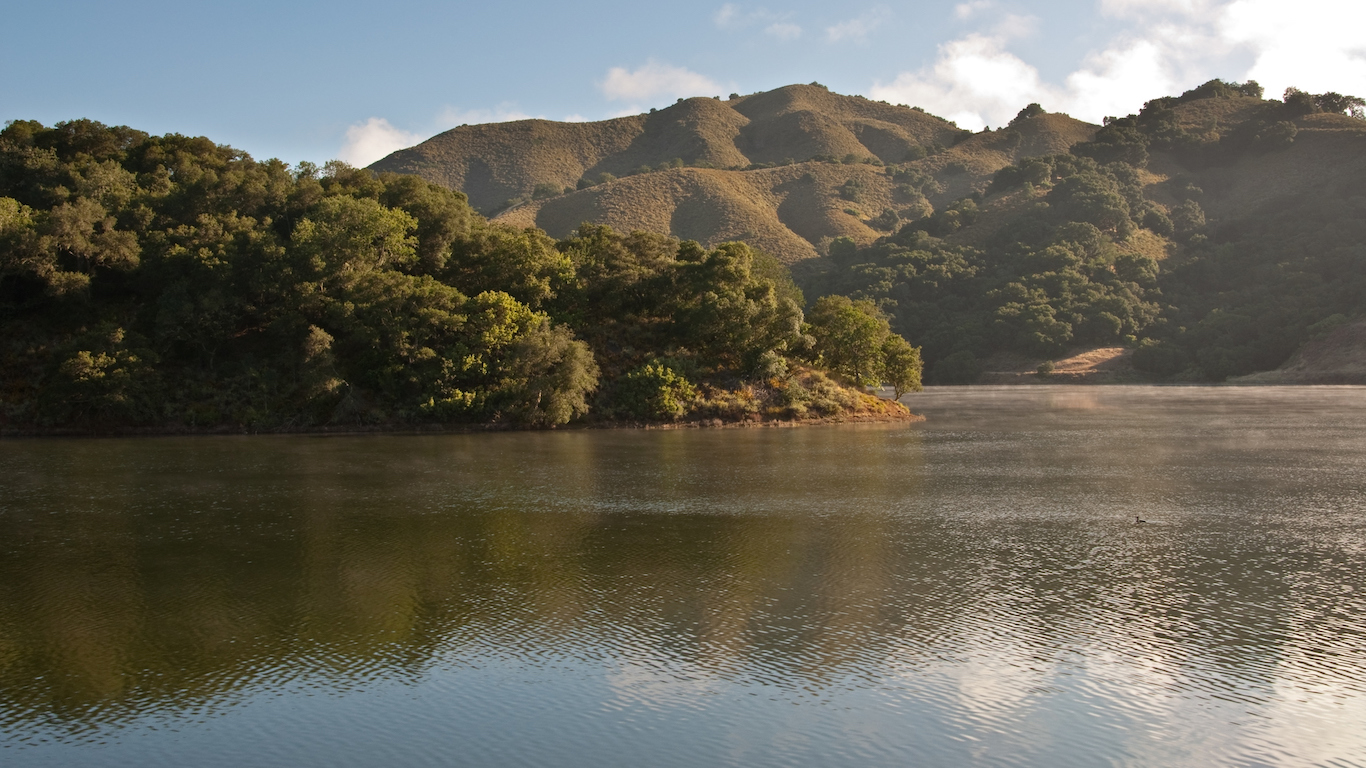 |
15. San Jose-Sunnyvale-Santa Clara, CA
> Change in severe drought coverage: -86.0 ppt.
> Pct. land abnormally dry: 43.1%
> Total time spent in severe drought since 2000: 4 years, 5 months
The San Jose-Sunnyvale-Santa Clara metro area is one of many cities in California to recover from drought over the past year as heavy storms and rainfall in the winter months helped bring drought relief to most of the western United States. While as of May 2016 an estimated 86% of San Jose was in severe drought, today the entire metro area is free of such harsh drought conditions. In April of this year, the San Jose City Council declared an end to the citywide water supply shortage, lifting the restrictions on domestic water usage that city leaders had imposed the year before.
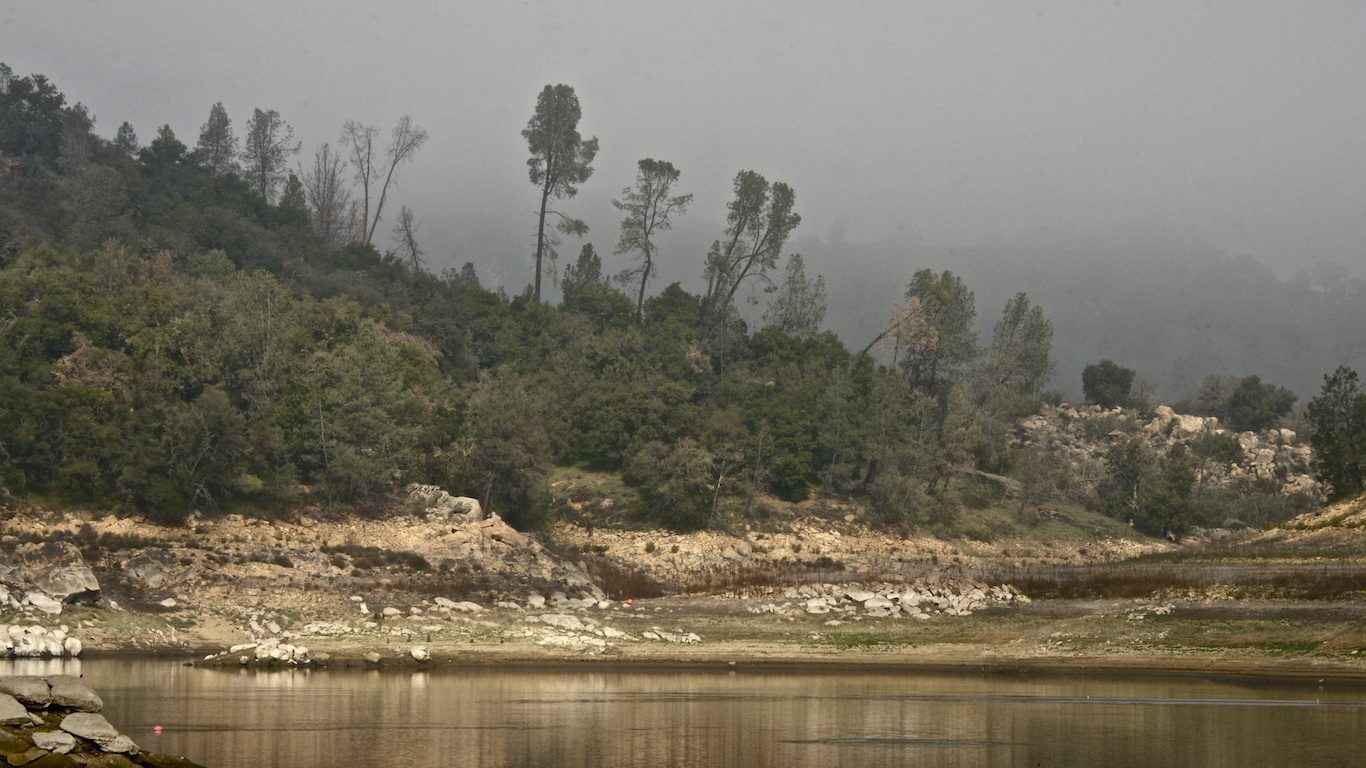 |
 |
16. San Luis Obispo-Paso Robles-Arroyo Grande, CA
> Change in severe drought coverage: -100.0 ppt.
> Pct. land abnormally dry: 96.0%
> Total time spent in severe drought since 2000: 5 years, 2 months, and 1 week
The San Luis Obispo-Paso Robles-Arroyo Grande metro area was one of the cities hit hardest by California’s multi-year drought. After the entire area experienced severe drought for more than three and a half years, San Luis Obispo began to recover in early 2016. San Luis Obispo County had its wettest month in 20 years this past January, and by February of this year all of the metro area was free of severe drought conditions.
San Luis Obispo would still benefit considerably from more rain. An estimated 96% of the metro area remains abnormally dry, which means there may be lingering water shortages and some crops and pastures may not be fully restored.
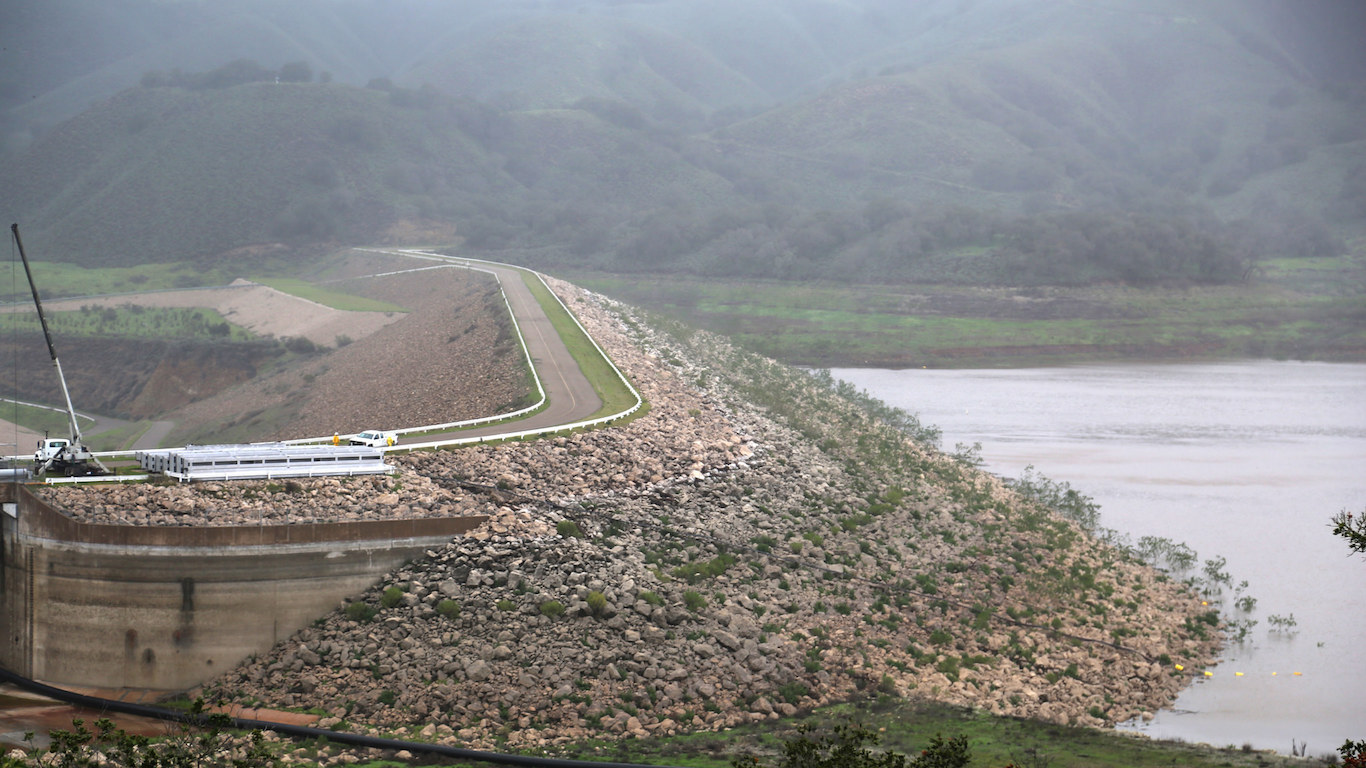 |
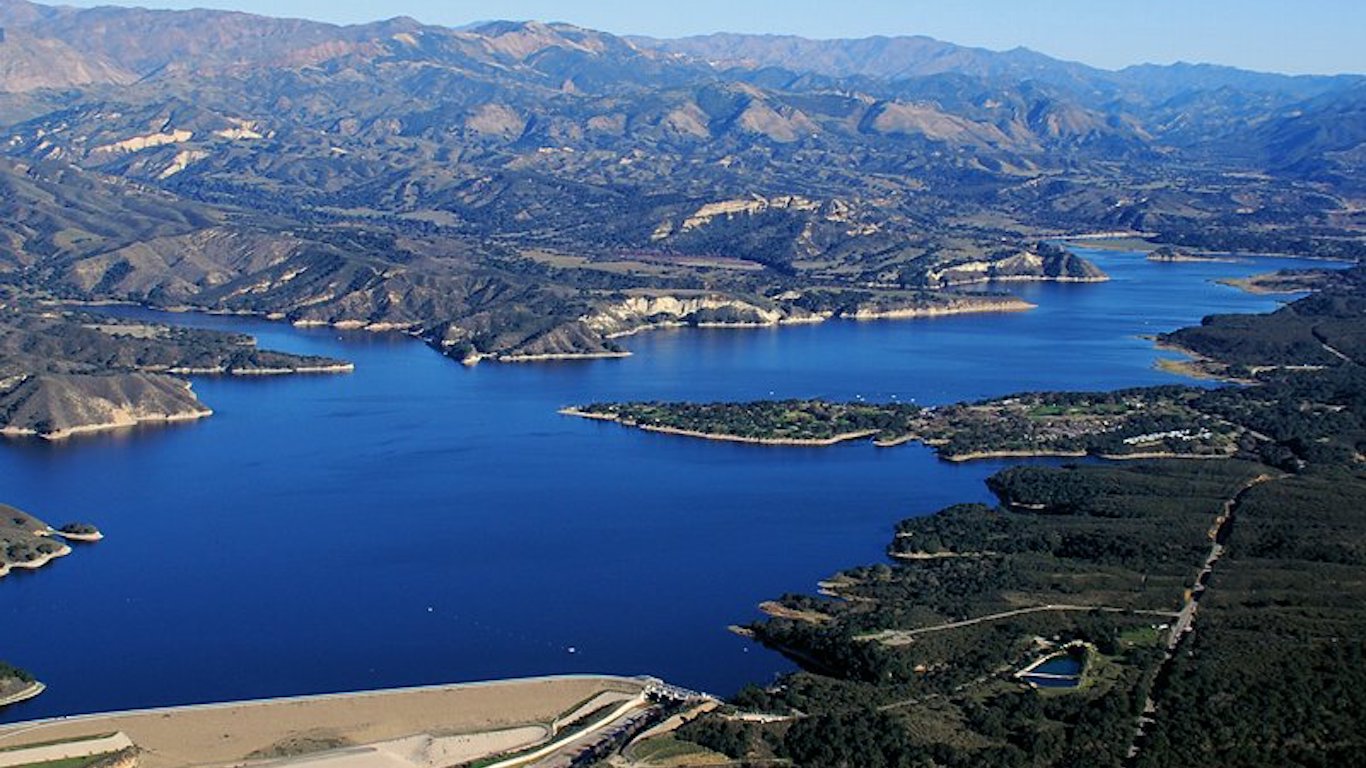 |
17. Santa Maria-Santa Barbara, CA
> Change in severe drought coverage: -100.0 ppt.
> Pct. land abnormally dry: 100.0%
> Total time spent in severe drought since 2000: 5 years, 3 months
Located in California’s Central Coast region, the Santa Maria-Santa Barbara metro area was one of the cities hit hardest by the statewide drought. In May 2016, the entirety of Santa Maria was in severe drought. After more than three years straight under these conditions, Santa Maria began to recover from the drought in January 2017, when the metro area and California as a whole were inundated with some of the heaviest rainfall on record.
While today the metro area is fully free of severe drought, it is far from a complete recovery. The U.S. Drought Monitor estimates that all land area in Santa Maria is abnormally dry, which means there may be lingering water shortages and some crops and pastures may not be fully recovered. Only three other metro areas in California are 100% abnormally dry.
 |
 |
18. Stockton-Lodi, CA
> Change in severe drought coverage: -100.0 ppt.
> Pct. land abnormally dry: 0.0%
> Total time spent in severe drought since 2000: 4 years, 9 months, and 2 weeks
At this time last year, and for nearly three years before that, the entirety of Stockton-Lodi was in severe drought. Conditions began to improve last winter when, like most of California, the metro area was inundated with heavy storms and rainfall. The metro area became entirely free of severe drought in late January this year, and in April, California Gov. Jerry Brown ended the drought state of emergency in San Joaquin — the county that comprises the Stockton-Lodi metro area — and 53 other counties statewide.
Stockton is one of many metro areas in California’s San Joaquin Valley heavily dependent on agriculture. According to one study by researchers at California State University, drought is responsible for $3.3 billion in losses to the San Joaquin Valley farming industry.
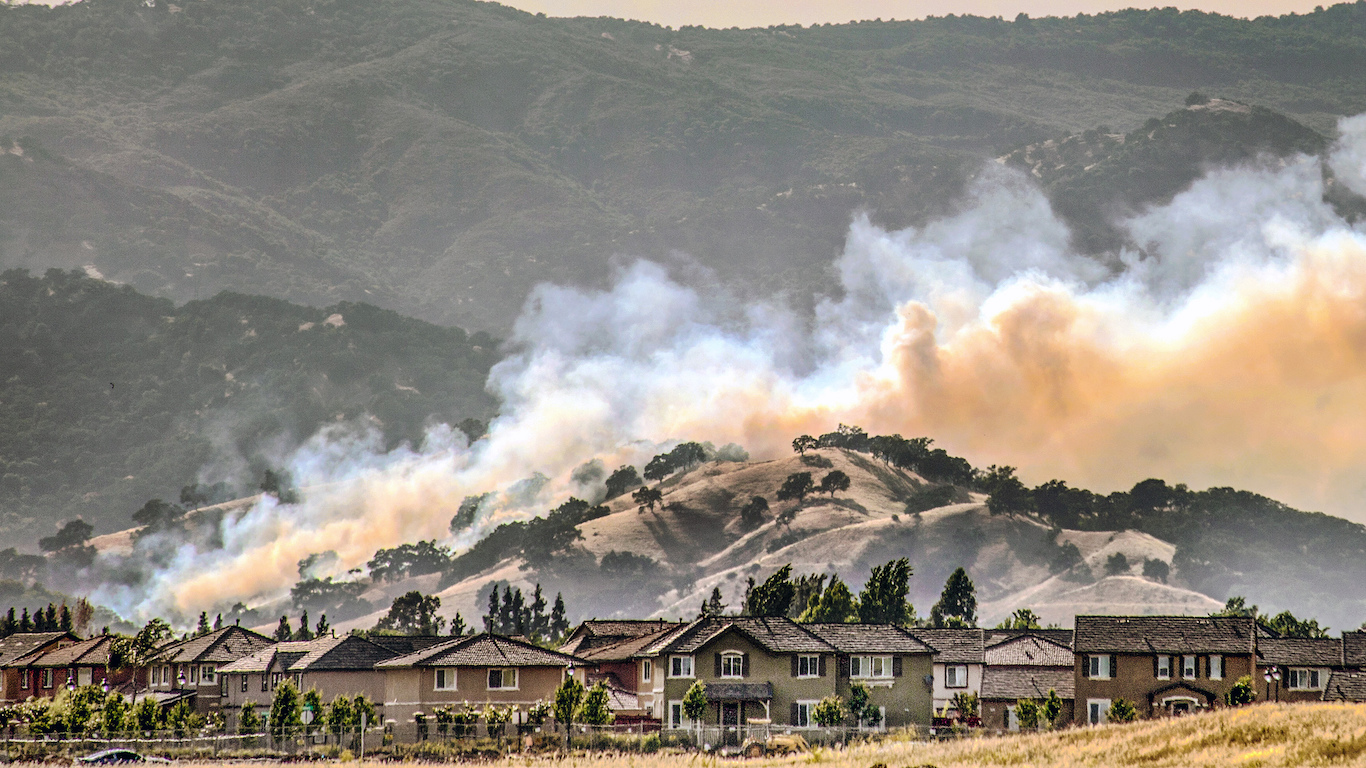 |
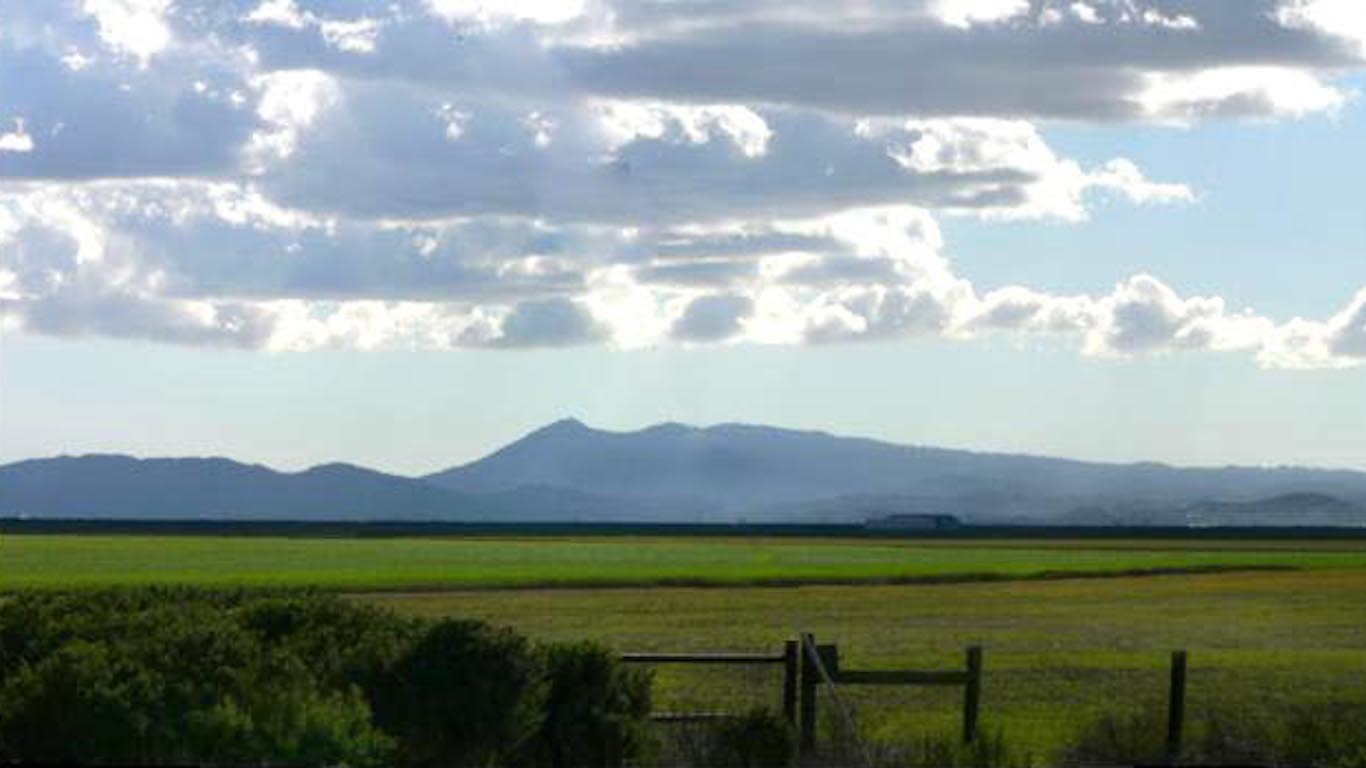 |
19. Vallejo-Fairfield, CA
> Change in severe drought coverage: -82.4 ppt.
> Pct. land abnormally dry: 0.0%
> Total time spent in severe drought since 2000: 4 years and 3 weeks
Located in Northern California, the Vallejo-Fairfield metro area was one of the first cities in California to recover from the drought. In May last year, 82.4% of Vallejo was in severe drought. Northern California was inundated with some of the heaviest rainfall on record this past winter, and by January 2017 the Vallejo metro area in its entirety was no longer in severe drought. In April of this year, California Gov. Jerry Brown ended the drought state of emergency in 54 counties statewide, including Solano, which comprises the Vallejo-Fairfield metro area.
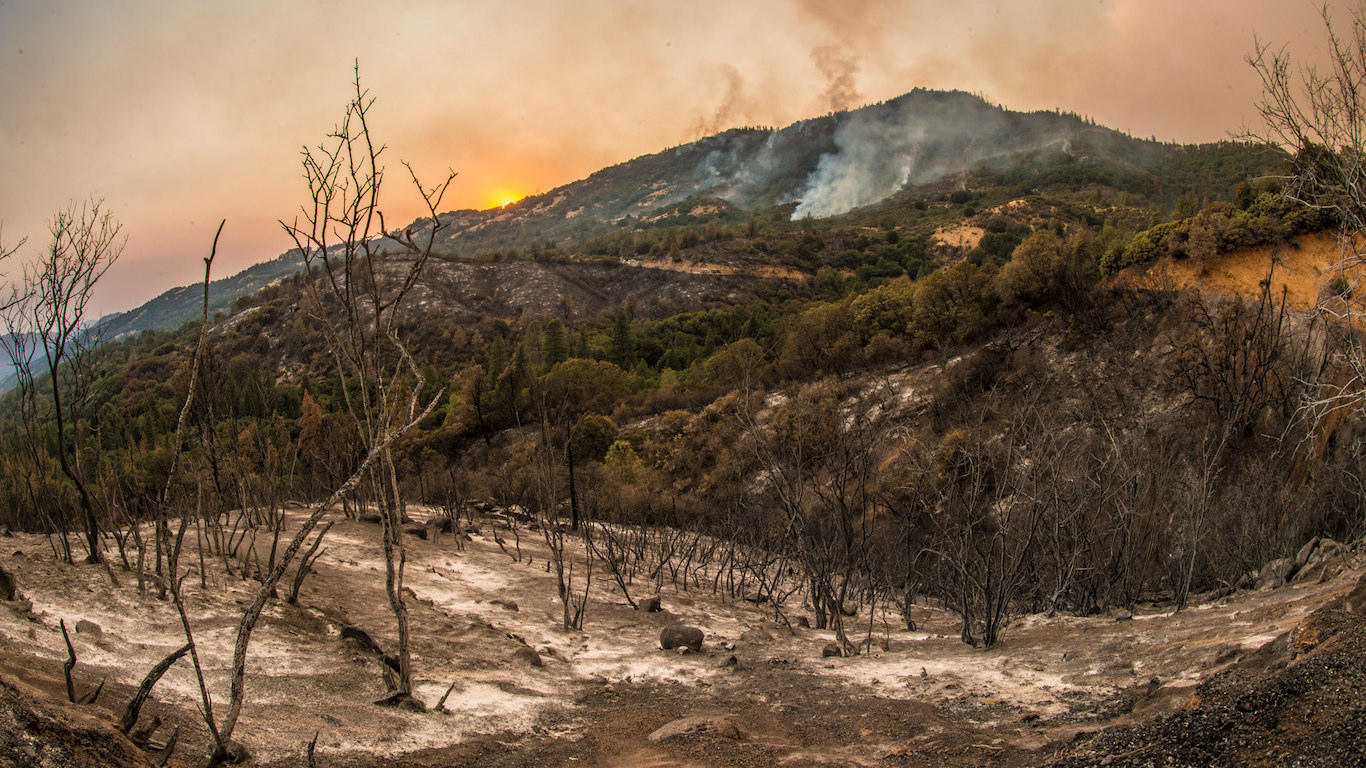 |
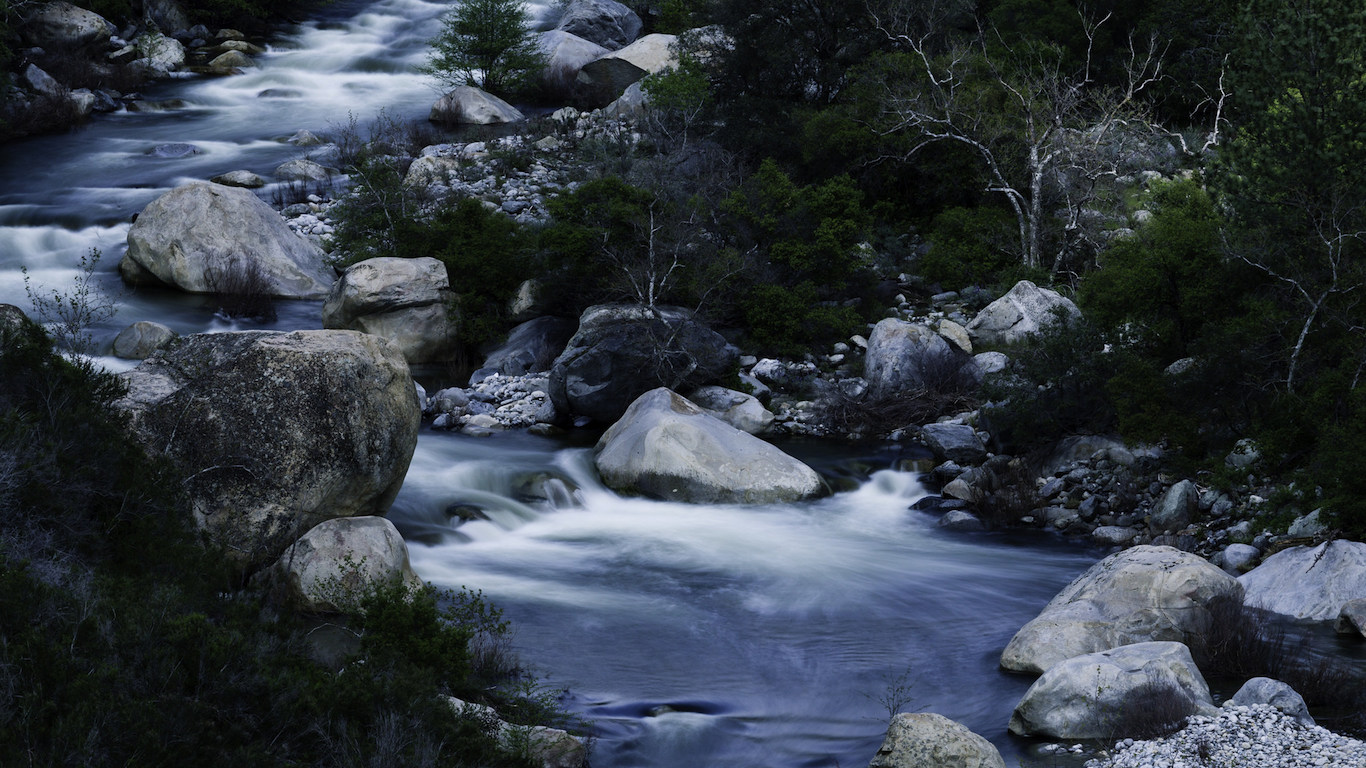 |
20. Visalia-Porterville, CA
> Change in severe drought coverage: -100.0 ppt.
> Pct. land abnormally dry: 0.0%
> Total time spent in severe drought since 2000: 5 years, 6 months, and 2 weeks
The Visalia-Porterville metro area fully recovered from drought over the past year, improving from 100% severe drought coverage in May 2016 to 0% today. While the Visalia metro area is free of severe drought, the city’s water management issues are far from fully resolved. As of March 2017, there were roughly 150 active well failures in the metro area. While Gov. Jerry Brown ended the drought state of emergency in nearly all counties in California in April 2017, Tulare — the county comprising the Visalia-Porterville metro area — along with three other counties, were not among them. The Visalia City Council has also chosen to keep its local water conservation rules in place through the summer.
 |
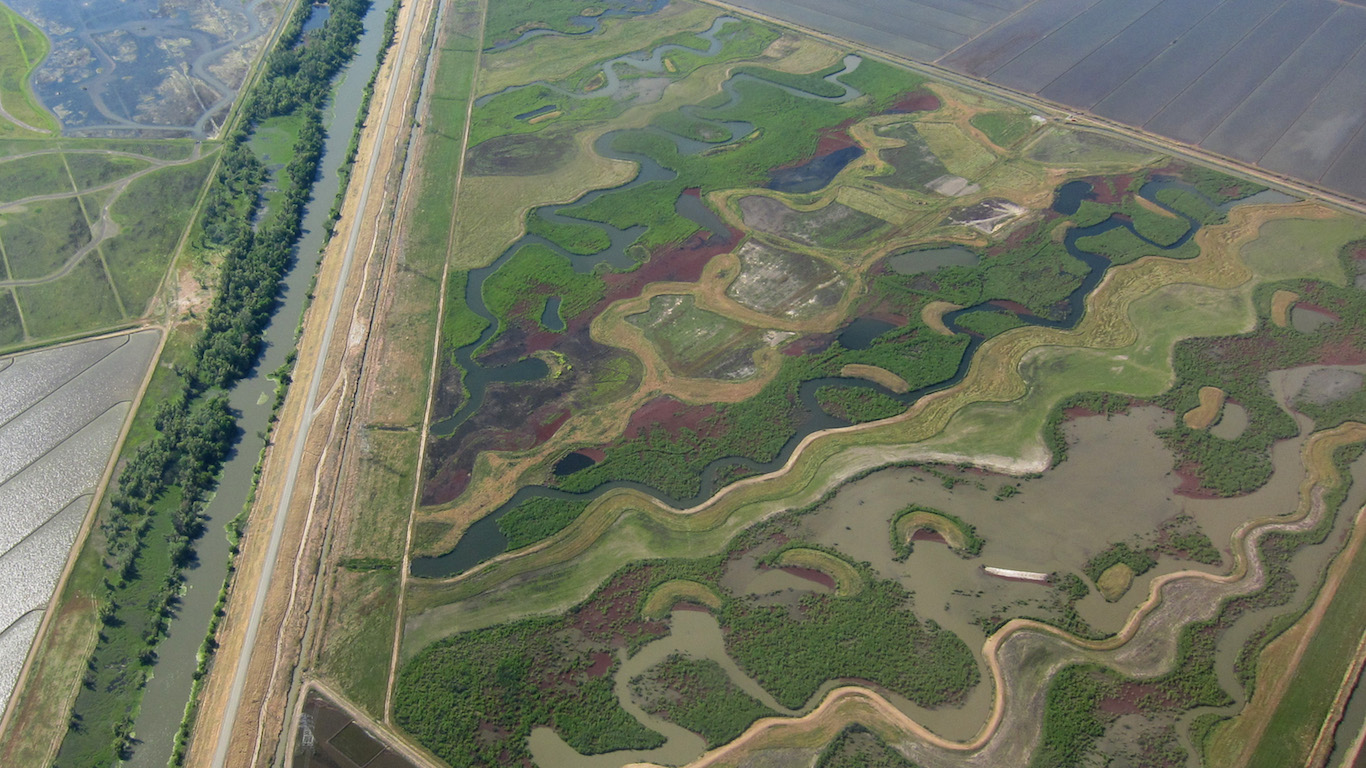 |
21. Yuba City, CA
> Change in severe drought coverage: -100.0 ppt.
> Pct. land abnormally dry: 0.0%
> Total time spent in severe drought since 2000: 4 years, 3 months, and 2 weeks
After nearly three years straight of 100% severe drought coverage, Yuba City recovered from these drought conditions by late May 2016, and it has been completely free of severe drought since. Yuba City is located in Northern California, which was inundated with heavy precipitation from El Niño storms in early 2016. The storms increased snowpack and reservoir levels in the region and helped alleviate drought conditions across Northern California. In April of this year, California Gov. Jerry Brown ended the drought state of emergency in Tuba and Sutter — the two counties that comprise the Yuba City metro area — and 52 other counties statewide.
Detailed Findings
In an interview with 24/7 Wall St., United States Department of Agriculture meteorologist Brad Rippey said that while identifying the cause of the drought relief is disputed among experts, “you can attribute a lot of the improvement in recent months to a very active Pacific jet stream.” This weather pattern, which arises when contrasting temperatures collide, resulted in above-average precipitation in the fall and winter.
The remarkable drought recovery in the western United States means that California and the surrounding region are not likely to return to dangerous drought conditions for at least another few years. Most of the land area in nine of the 21 metro areas listed here was at this time last year classified as being in exceptional drought — the worst possible level of drought intensity. In those same areas today there is no trace of such conditions.
With so much improvement often occurring after a single downpour, drought conditions can seem to disappear overnight. However, Rippey noted several larger issues tied to the drought problem of recent years that continue to trouble some parts of the region. Even without a drought crisis, he explained, many parts of the region continue to have water management issues resulting from overpopulation and depleting water supplies during the five-year drought.
Northern California contains 13 of the metro areas on this list. Reservoirs and other surface water sources are the primary water distribution methods for the region. Areas in the Central Valley and in Southern California, by contrast, rely disproportionately on wells that access groundwater. The effect of heavy rain on groundwater levels — which are notoriously difficult to measure — is less immediate than for surface water levels.
There are other lingering impacts from long-term drought. For example, there are hundreds of millions of dead or dying trees, which increases the odds of wildfire. The precipitation that brings drought relief also, depending on numerous factors such as how fast snowpacks melt, increases the odds of flooding.
Methodology
To identify the cities with improving drought conditions, 24/7 Wall St. reviewed the percentage of land area in severe to exceptional drought from the U.S. Drought Monitor as of the weeks ended May 15, 2017 and May 16, 2016. Data was aggregated from county level to metropolitan statistical area level using MSA definitions and land area data from the U.S. Census Bureau. For a metropolitan area to be considered in drought as of 2016, at least 80% of the city’s land area must have been in severe to exceptional drought as of the week ending May 16, 2016. For a metropolitan area to be considered currently free of drought, no more than 20% of the city’s land area could be in severe to exceptional drought as of the week ending May 15, 2017. Cities that did not meet these criteria were excluded from the analysis. The list represents the metropolitan areas with the largest year-over-year percentage-point changes in land covered by severe to exceptional drought. Because 17 of the 21 cities on our list had a 100 percentage point decline in severe to exceptional drought coverage and would result in a 17-way tie, the list is presented alphabetically.
The thought of burdening your family with a financial disaster is most Americans’ nightmare. However, recent studies show that over 100 million Americans still don’t have proper life insurance in the event they pass away.
Life insurance can bring peace of mind – ensuring your loved ones are safeguarded against unforeseen expenses and debts. With premiums often lower than expected and a variety of plans tailored to different life stages and health conditions, securing a policy is more accessible than ever.
A quick, no-obligation quote can provide valuable insight into what’s available and what might best suit your family’s needs. Life insurance is a simple step you can take today to help secure peace of mind for your loved ones tomorrow.
Click here to learn how to get a quote in just a few minutes.
Thank you for reading! Have some feedback for us?
Contact the 24/7 Wall St. editorial team.